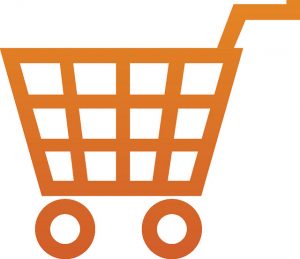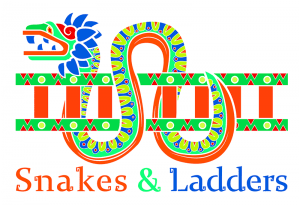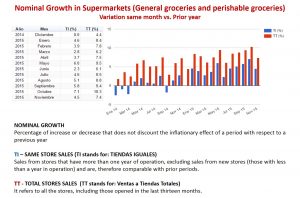CONSUMER HABITS
In the previous column “Mexico by The Numbers Part I“, we talked some about Mexico as a country, its people etc.. and also about how the AMAI (The Mexican Association of Research Agencies) conformed by marketing research companies such as Millward Brown, Nielsen/Ibope and Serta to name a few, have established very specific social/economical denominations for the Mexicans according to their level of education and income. But today, we will talk about how people in this country spend their money.
MEXICAN PURCHASING HABITS
 Take this scenario into context. According to data from the INEGI or The National Institute of Statistics and Geography, there are in Mexico an average of 31+ million homes, where families are formed by an average factor of 3.9 members per household and a documented income that averages a quarterly amount of $39,000.00 pesos (which is $13,234.00 pesos a month, with a US Dollar price of $18.80 this means $715 USD a month). According to our sources, well known public and private entities such as PROFECO, 2b Marketing & Publicity and Kantar Worldpanel México amongst others, who constantly conduct “Household panels” in order to understand better home buyers and obtain a detailed overview of the products purchased for the family, and/or the individual, with a significant data of the dynamics between shopping behavior and users. These Mexican households have a very specific spending habit and even though this changes from state to state, in a general view, most of their earnings are spent in the following categories: (In order of importance/and as it was answered)
Take this scenario into context. According to data from the INEGI or The National Institute of Statistics and Geography, there are in Mexico an average of 31+ million homes, where families are formed by an average factor of 3.9 members per household and a documented income that averages a quarterly amount of $39,000.00 pesos (which is $13,234.00 pesos a month, with a US Dollar price of $18.80 this means $715 USD a month). According to our sources, well known public and private entities such as PROFECO, 2b Marketing & Publicity and Kantar Worldpanel México amongst others, who constantly conduct “Household panels” in order to understand better home buyers and obtain a detailed overview of the products purchased for the family, and/or the individual, with a significant data of the dynamics between shopping behavior and users. These Mexican households have a very specific spending habit and even though this changes from state to state, in a general view, most of their earnings are spent in the following categories: (In order of importance/and as it was answered)
1. Food
- Tortillas & packaged bread
- Eggs, meat, inlayings/sausages
- Crackers/cookies
- Cereals
- Coffee
- Pastas
- Mayonnaise
- Butter
- Others
2. Beverages
- Soda
- Milk
- Beer and other alcoholic beverages
- Tea and powder flavored drinks
- Purified water
3. Tobacco products.
- Cigarettes
4. Transportation and Communication
- Bus, metro, others
- Cellphone
5. Education
- Materials in general for school (books, notebooks etc.)
- Tutoring
6. Recreation
- Eating out, movies, others.
7. Clothing and footwear
8. Personal Care
- Diapers
- Soap and shampoo
- Toothpaste
- Female hygiene products
- Fragrances and deodorants
- Others
9. Health Care
- Doctors/Medicine
Although the above manifested reflects in general some of the trends of consumption in the country, the reality is that cultural and social aspects change buying habits of different niches that make up the market, where the new family structures are amongst the more important. But let us see some of the numbers presented by the ANTAD or Asociación Nacional de Tiendas de Autoservicio y Departamentales, A. C. (National Association of Supermarkets and Department Stores) comparing the purchase behavior of 2014 vs. 2015
CLICK TO ENLARGE
It is the same but…
After seeing and reviewing the numbers and behavior of the different market segments, we can conclude that “product categories” are no longer exclusive to one gender and that renewal will become a “must” that brands will have to assume. I can categorically affirm that the behavior has significantly changed the market. Up until a few years ago, the traditional family had that one person who was the main purchase “decision maker” in all forms. As an example, the mother or wife was the one who decided what brand of soap or detergent was to be purchased and used… not anymore. Today we find more men increasingly deciding on the purchase process. Now we find “untraditional” families either because the wife is the main money generator, same sex couples, single parents, DINKS (Double Income No Kids), empty nesters or single people who no longer live with their parents.
There is a particularly interesting study conducted by The Future Laboratory, an innovative firm of global market research sponsored by American Express, regarding the future of consumer spending and the new era of buying. In it, significant figures show that consumers are better now than they were in the past. For instance, 68% of Mexicans are more aware of the cost of products at the time of purchase, while 58% buy goods driven by quality. 49% give more importance to products whose added value is the protection of the environment. Technology has also seized more strength: 21% of respondents use social networks and mobile geo-location to find stores and increasingly use more specialized web sites to make purchases. So basically, this study confirms that people can no longer be seen as a faceless crowd, plain numbers, since we are heading towards a smarter consumption.
Next Tuesday: Mexico and its use of the internet.
TO BE CONTINUED…
J.Urioste
[email protected]
 Snakes and Ladders is a column by José E. Urioste, The Yucatan Times CEO and a Business Intelligence professional in the area of Research and Development. He began his training process in mass media writing scripts for radio programs, commercials and advertising campaigns and has contributed with newspapers, magazines and other media in general on various topics ranging from the professional to the editorial. José is the author of 3 fiction novels that have been presented in numerous forums and literary competitions, causing much controversy as to their content.
Snakes and Ladders is a column by José E. Urioste, The Yucatan Times CEO and a Business Intelligence professional in the area of Research and Development. He began his training process in mass media writing scripts for radio programs, commercials and advertising campaigns and has contributed with newspapers, magazines and other media in general on various topics ranging from the professional to the editorial. José is the author of 3 fiction novels that have been presented in numerous forums and literary competitions, causing much controversy as to their content.






